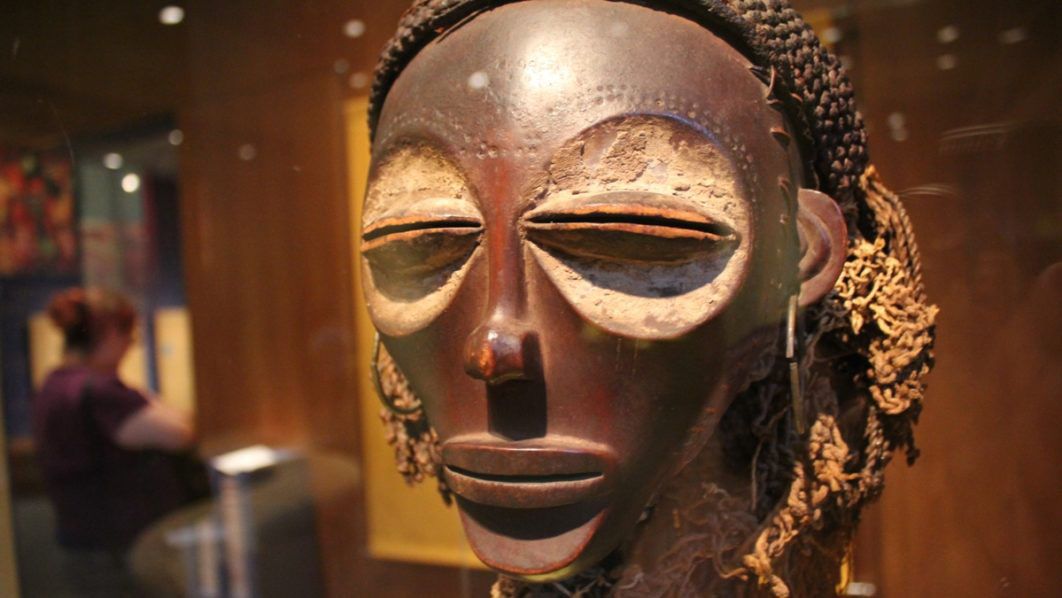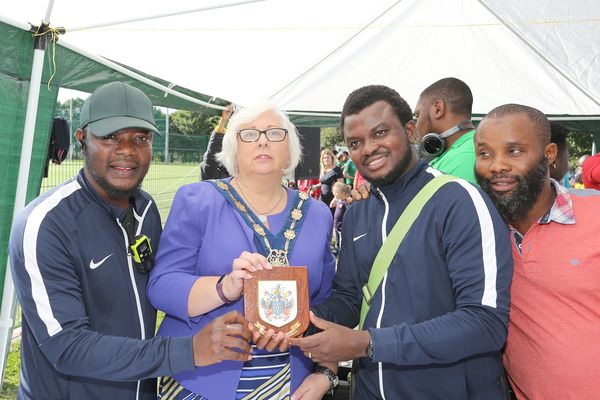I WOULD say that there are many unofficial galleries of African art in many homes in Ireland. I can't explain this movement enriching the homes of many people here. Was it possible that Irish people were caught up in many ornamental fashions and African art became one of them? You know – the way a whole working class street where I live choose to buy the same type of blinds for their windows and after two years it is all change?
Were the new collectors of African craftware even a phenomenon, or did people become tired of the same old flags, murals and bric-a-brac that represented the old Northern Ireland? I do think that some of the owners of these pieces of African art travelled to Africa as holiday-makers, missionaries and other pursuits that brought them in touch with the continent. I met this interesting African masks collector who has a long list of art in his man-shed. He is a bit of a hoarder and absolutely nothing wrong with that. He has a crocodile mask from Ivory Coast, a wooden ‘aban’ mask from Ghana and a weird ‘komo’ originating from Mali.
As stolen artwork and artifacts slowly make their way home, the next question is about what kind of future African countries will create through their displays of heritage and history. https://t.co/CKhwixZ2Qr
— Africa Is a Country (@africasacountry) December 2, 2020
All these west African nations were some of the earliest cradles of African artistic enlightenment. At the turn of the 19th century, many European and some American travellers were starting to take these great African works from the continent. In everyday language, some of these people were stealing the works of art which had monumental importance to the locals of those communities in Africa. The European travellers wrote pompous claims of discovering these forms of art. They were not saying publicly that “We stole it.” Shame. Some called their collections souvenirs. For centuries these items didn't find a home in art museums in the west because they were portrayed as simple curiosities.
Also, they were down there below the racial hierarchies: African art was not celebrated, these were just subjects of future anthropology because they were made by inferior people. I don't think this is the same way Irish owners of African art view their collections. Each story is individual and it is incorrect to pretend that the Irish were simply keeping these items as ornaments or curiosities. Their history is important to them. I have seen this in the context of meeting modern day collectors here in Northern Ireland.
Also, imagine attending the annual August Edinburgh Festival and you find the issue of African art treated as a humorous topic. That is laughable. I would imagine such a spectacle would pull decent crowds. What is my point here? Well, there is a sense that some ancient African art presents itself as comical. At local markets in the north, the potential buyers will ask, ‘What about that voodoo doll?’ ‘How about your fertility figurine?’ Okay, some of these works of art I have encountered in Ireland are a case study of people genuinely wanting to know about African cultural heritage.
I was told that another possible reason for the obsession with African sculptures is that different periods and landmark events on that continent would draw people in. For example, the Biafran War of the 1960s in Nigeria that killed over a million people and the Ethiopian famine that ravaged parts of that country in the 1980s. These African busts and figurines became more popular during those periods, especially in the case of the 1980s and later 1990s because people were now getting more curious about Africa.
This might all sound boring until you meet a ten-kilogram pair of busts, male and female, originally from the Congo, that I found from a collector.
I repeat, I have seen Irish people making shrines out of African art in their homes here in Northern Ireland. But these are not subject to discussions of art reparations to Africa.








